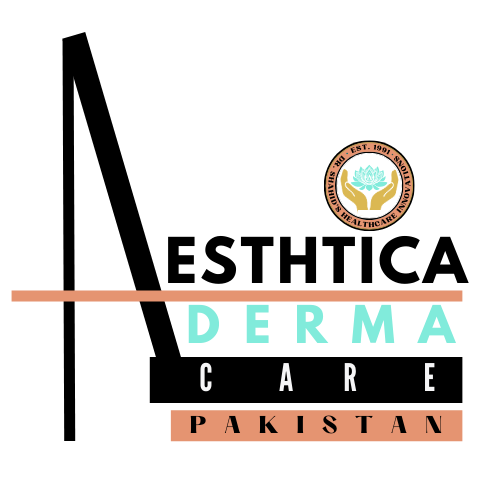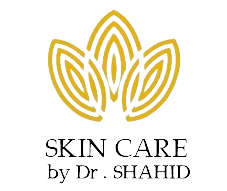


It is called as Enzyme Potentiated Desensitization (EPD) in UK LDA (Low Dose Allergens) is a method of Immunotherapy, developed by William Shrader, M.D. (president of the American Academy of Environmental Medicine), is enhanced by a minute amount of the enzyme, beta glucuronidase. This enzyme activates extremely small doses of various allergens (food, environmental, chemical) and stimulates the production of specialized immune cells called T-suppressor cells.
LDA is used to treat all types of allergy, sensitivity and intolerance to inhalants (pollens, dust, mites, danders, etc.), foods and chemicals. It is used to treat such conditions as seasonal and perennial hay fever, asthma, all types of food allergy and many types of chemical sensitivities. The treatment involves specialized injections, under your skin, every 2 months, and then less often as you respond. It is a painless and highly effective procedure to help those with chronic allergies overcome them or become markedly more functional.
England: Downing, Dr. Damien, York, England 011-44-(190) 469-1591
Econs, Dr. Apeles, Yorkshire, England 011-44-(193) 282 0578 (thames@allergymedicaluk.com)
Hembry, Dr. Nicola, Clifton, Bristol, England 011-44-(117) 317-1460
Denmark: Martinussen, Dr. Jef (ND), Copenhagen, Denmark 011-45-7023-4888
Dubai/Pakistan: Abbas, Dr. Shahid, Dubai, U.A.E. 011-97-14 4392305, and Islamabad, Pakistan 011-92-51 2275210 (www.allergycenter.info)
South Korea: Kiho, Dr. Nam, Kangwoon, South Korea
Dr.Shahid Abbas, consultant Allergy and Immunology is trained by Dr.Shrader in making and administering the LDA. There are only two physicians in Asia trained in administering the LDA or EPD.
• Low Dose Allergen Immunotherapy
• Ultra-Low Dose Enzyme Activated Immunotherapy
• The Allergy Treatment of the Future – Here Now
To schedule your consultation with the top low dose allergy immunotherapy specialist in 051 111160160(Islamabad), 051 4848712(Rawalpindi), +971 4 276 5606 (Westminster Clinic Dubai Health Care City or contact us online today! www.allergycenter.info
GET MORE INFO
LDA or EPD Physicians in the world(Visit webpage to find your country LDA Physician trained in administration of LDA
http://www.drshrader.com/lda_physicians.htm
Here are the physicians (alphabetically by state) who administer LDA in this country, Canada, the UK and elsewhere. I know most of these physicians personally. Many have used EPD and were part of the EPD Study group, and Dr. McEwen and I trained them. All are eminently qualified, and I would recommend each of them. If you do not see a state listed, there are no physicians using LDA in that state. Please do not call our office to ask about these physicians. If you have any questions about LDA, please contact the physician nearest to you. If you call and are advised that a physician is no longer using LDA, please let our office know, and thanks!
HISTORY OF LDA:- http://www.drshrader.com/pr02.htm
Enzyme Potentiated Desensitization (EPD) is a unique method of immunotherapy, developed in the 1960s, which involves treating all types of allergy with combinations of a large variety of extremely low dose allergens. EPD is a cell-mediated type of immunotherapy. It has been employed to treat multiple conditions and is a long-lasting treatment option for allergy and autoimmune illnesses. It has also been employed for many conditions not generally thought to be due to any type of allergy or autoimmune disease. EPD is no longer available in the USA and has been replaced by Ultra Low Dose Enzyme Activated Immunotherapy (LDA).
This site summarizes the results of treatment with EPD of 10,372 patients for various conditions from 1993 through 2000 by members of the American EPD Society (AEPDS). The AEPDS was a group of over 70 physicians specifically trained to administer EPD immunotherapy. From 1993 through 2000, the study was formally supervised by the Institutional Review Board (IRB) of the Great Lakes College of Clinical Medicine (GLCCM).
Conventional “escalating dose” (where the dose is started “low” – usually 1 to 10,000 and increased over time to as high as 1 to 10, 1 to 20 or 1 to 100) immunotherapy is employed in this country primarily to treat hay fever and cat and dust mite allergy, which are primarily IgE mediated. This type of therapy works by causing the patient to produce “blocking antibody” (specific IgG), which inhibits the histamine-releasing ability (which produces the allergy symptoms) of the mast cell. The higher the level of blocking antibody that can be produced, the more successful is the treatment. In order to produce adequate levels of blocking antibody, studies have shown that it requires administration of very high doses of allergen. Therefore, treatment using this method often causes intolerable swelling and other side effects before clinical efficacy can be attained, and can be dangerous due to the risk of severe reactions such as anaphylaxis, massive swelling, collapse and death.
In England, “conventional” (escalating dose) immunotherapy has now been banned by the Medicines Commission (26 deaths had been reported) except when given in a hospital setting where emergency resuscitation equipment is immediately available. On the other hand, EPD is allowed to be administered in physicians’ offices in England. Hence there has been a virtual demise of conventional high dose immunotherapy in England.
In the United States, at least 60 deaths have been recorded since treatment began in the 1930s as a result of conventional immunotherapy, but the actual number is likely closer to 100.
Deaths from conventional escalating dose immunotherapy are generally a result of anaphylaxis. This is due to the extremely high dose of antigen required to produce a significant clinical effect. EPD immunotherapy, however, is cell-mediated and extremely low dose. The highest ending dose (“maintenance” dose) of EPD is at least 10 million times less than the standard maintenance dose for conventional immunotherapy.
EPD immunotherapy is now the only allergy immunotherapy permitted to be used in a physician’s office outside a hospital setting in the United Kingdom.
The danger of fatal or life-threatening systemic reactions to EPD treatment is negligible. Well over 350,000 doses of EPD have been given worldwide, and again – unlike other types of immunotherapy – life-threatening reactions to EPD have not been reported since use was begun over 40 years ago.
Conventional escalating dose immunotherapy generally does not generally offer long lasting benefit, and it cannot easily be stopped without the return of significant symptoms in 3 to 12 months. It has been suggested by several previous studies of EPD immunotherapy that this method of treatment can produce much longer lasting desensitization than does conventional immunotherapy, with treatments lasting as long as 1-5 years. Historically, approximately half of patients who have responded to EPD were able to stop permanently after between 10 and 20 treatments.
Conventional immunotherapy must usually be administered twice weekly for the first four to six months of treatment. Once the very high maintenance dose is reached, the treatment interval may be extended to once every two weeks, but rarely less often.
EPD immunotherapy, on the other hand, is only administered every two months or less often, according to previous published studies and our 7-year study. Treatment is required only every two months initially for a period of approximately 12 months. After that time, the treatment interval may generally be extended to three months or longer.
Most adults with significant problems require 16 of 18 treatments at intervals of three months or longer, at which time treatment may be discontinued or significantly reduced (intervals of a year or less often are common) for the majority of patients.
EPD includes mixtures of antigens developed by Dr. McEwen over the past 30 years that may act quite “universally.” This means patients allergic or intolerant to most substances have responded to treatment.
Available EPD mixtures include inhaled pollens, danders, dust and mites, a wide range of bacteria, fungi, yeast (including candida species), molds, all foods (except EPD will not desensitize to raw carrot and raw apple), many food additives, most common chemicals (except pesticides and herbicides), formaldehyde, detergents (for contact skin sensitivity), wood terpenes, and mosquito (which likely cross reacts with other non-venomous insects). EPD treatment for bee venom anaphylaxis is currently under investigation in England.
EPD has the distinct advantage that it effectively treats a very wide variety of immune and autoimmune disorders (and others not generally perceived to be immune-related), including illnesses that respond poorly — or not at all — to other methods of treatment of any kind. Some of the conditions being treated successfully with EPD include hay fever [8,11, 14,15,25], dust mite allergy [16,20] perennial rhinitis [6], asthma [6,14,16,20], urticaria (“hives”) [14], eczema (dermatitis) of most all varieties [14], angioedema (swelling of the face, lips, etc.) [6,14], anaphylactic reactions (life-threatening swelling, usually involving the airways) to most known substances [14], food (or food additive/preservative) allergy or intolerance [7,12], adverse responses to chemicals (“multiple chemical sensitivity” or “MCS”) [14], ADHD (Attention Deficit Hyperactivity Disorder) [13,14], autism, Tourette’s syndrome, irritable bowel disorders, Crohn’s Disease, ulcerative colitis [7] migraine and other headaches [14,16,17,21] rheumatoid arthritis, ankylosing spondylitis and systemic lupus erythematosus [27], to name just a few.
Copyright © 2023 . All rights reserved.
